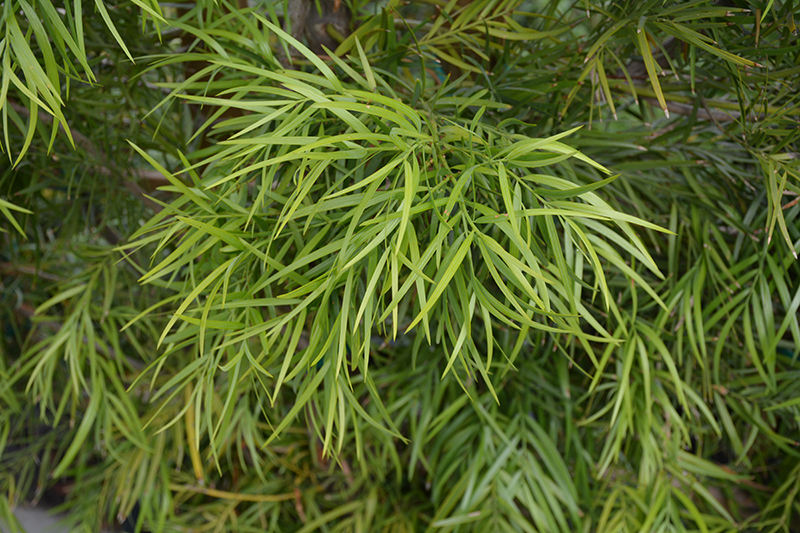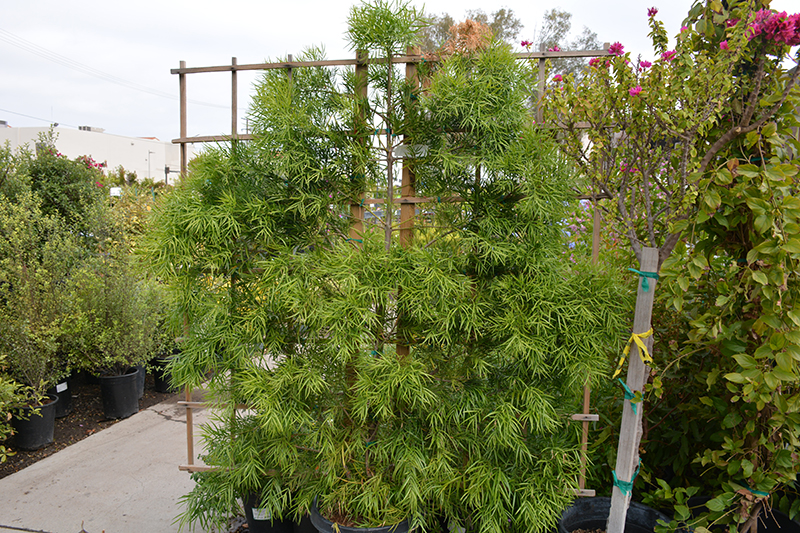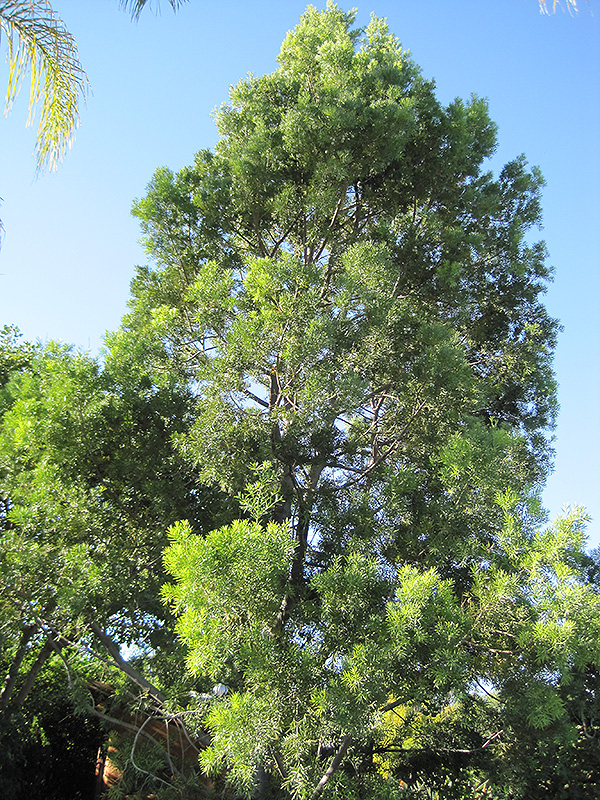Height: 50 feet
Spread: 30 feet
Sunlight:
![]()
![]()
Hardiness Zone: 9a
Other Names: Podocarpus gracilior, Afrocarpus falcatus
Description:
A dense, graceful tree that grows naturally upright, displaying branches that are heavily clothed with narrow, gray-green foliage; an elegant and exotic accent on the landscape; can be maintained as an informal screen, or as a smaller container planting
Ornamental Features
African Fern Pine has attractive grayish green evergreen foliage which emerges light green in spring on a tree with a pyramidal habit of growth. The narrow leaves are highly ornamental and remain grayish green throughout the winter. The buttery yellow fruits which fade to steel blue over time are held in cones from late spring to mid fall. The rough gray bark adds an interesting dimension to the landscape.
Landscape Attributes
African Fern Pine is a dense evergreen tree with a distinctive and refined pyramidal form. It lends an extremely fine and delicate texture to the landscape composition which can make it a great accent feature on this basis alone.
This is a relatively low maintenance tree, and can be pruned at anytime. It is a good choice for attracting birds to your yard. It has no significant negative characteristics.
African Fern Pine is recommended for the following landscape applications;
- Accent
- Shade
- Vertical Accent
- Hedges/Screening
Planting & Growing
African Fern Pine will grow to be about 50 feet tall at maturity, with a spread of 30 feet. It has a high canopy with a typical clearance of 4 feet from the ground, and should not be planted underneath power lines. It grows at a medium rate, and under ideal conditions can be expected to live to a ripe old age of 100 years or more; think of this as a heritage tree for future generations! This is a dioecious species, meaning that individual plants are either male or female. Only the females will produce fruit, and a male variety of the same species is required nearby as a pollinator.
This tree does best in full sun to partial shade. You may want to keep it away from hot, dry locations that receive direct afternoon sun or which get reflected sunlight, such as against the south side of a white wall. It does best in average to evenly moist conditions, but will not tolerate standing water. This plant does not require much in the way of fertilizing once established. It is not particular as to soil type or pH. It is somewhat tolerant of urban pollution. This species is not originally from North America.







